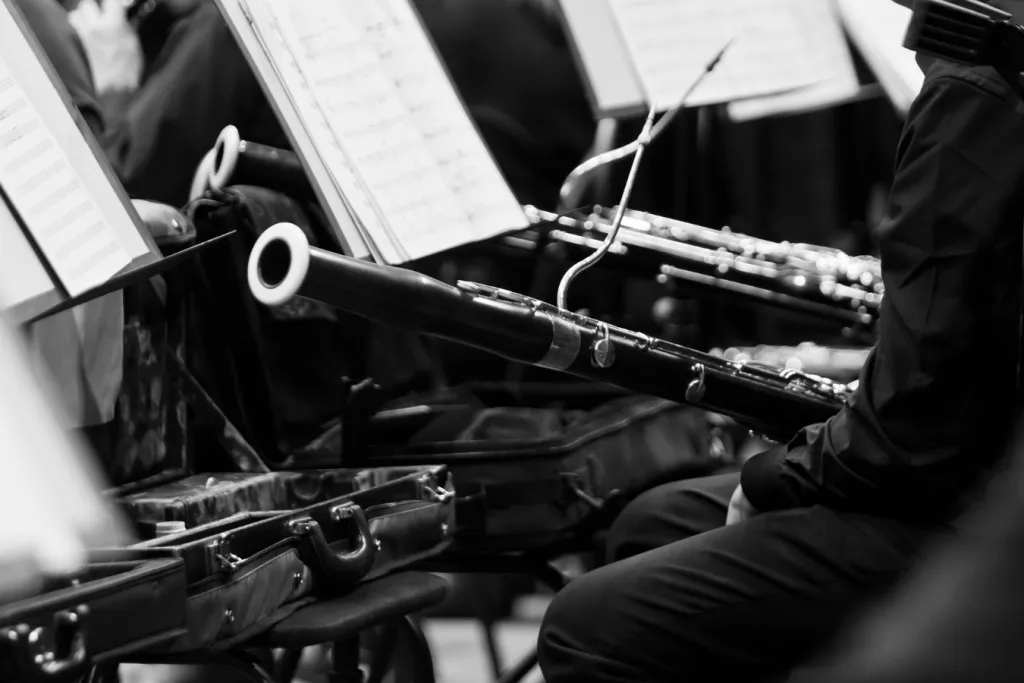Performing on the bassoon can be a thrilling yet nerve-wracking experience. Whether you’re preparing for a recital, concert, audition, or ensemble performance, the key to success lies in proper preparation, technique, and mental readiness.
This guide will help you break down the preparation process into practical and actionable steps, including:
✔ Instrument Maintenance
✔ Developing a Practice Routine
✔ Reed Selection and Adjustment
✔ Stage Presence and Nerves Management
✔ Final Preparations Before Performance Day
By following these tips, you’ll be able to perform with confidence and musicality while minimizing last-minute surprises.
1. Instrument Maintenance: Ensure Your Bassoon is Performance-Ready
A well-maintained instrument is essential for consistent tone production and smooth technique. Here’s how to ensure your bassoon is in top shape before a performance:
A. Check for Mechanical Issues
✔ Inspect your bassoon for loose screws, bent keys, or leaks.
✔ Test all keys to ensure proper spring tension and smooth movement.
✔ Check your bocal for dents or damage that could affect tone quality.
B. Clean Your Instrument
✔ Swab the wing and boot joints after each practice session to remove moisture.
✔ Wipe down the keys and body to prevent buildup and extend the instrument’s lifespan.
✔ If needed, schedule a professional check-up before a major performance.
C. Adjust and Test Your Reed
✔ Make sure your reed is broken in and responsive for the big day.
✔ Test different reeds a few days before to find the one that plays best.
✔ Soak reeds properly before playing, but avoid over-soaking, which can weaken the structure.
2. Developing a Practice Routine: Smart, Efficient, and Focused
A. Plan Your Practice Schedule
✔ Start early—don’t cram the week before your performance.
✔ Structure practice sessions into warm-ups, technical work, and repertoire focus.
✔ Keep a consistent schedule, even if it’s just 30-60 minutes per day.
B. Warm-Up Effectively
✔ Begin with long tones to stabilize your embouchure and improve breath control.
✔ Practice slow scales and arpeggios to reinforce finger accuracy.
✔ Use vibrato and dynamic exercises to refine musical expressiveness.
C. Work on Difficult Passages
✔ Identify the tricky sections and isolate them for slow, deliberate practice.
✔ Use rhythmic variations to break down fast passages.
✔ Gradually increase speed using a metronome.
D. Simulate Performance Conditions
✔ Practice standing or sitting in performance posture to get comfortable.
✔ Record yourself to evaluate intonation, phrasing, and dynamics.
✔ Rehearse with an accompanist or backing track if your piece includes one.
3. Reed Selection and Adjustment: Finding the Perfect Balance
Your reed plays a massive role in tone, response, and overall comfort.
A. How to Choose the Best Reed for Performance
✔ Select a reed that feels stable and comfortable, not overly hard or soft.
✔ Avoid using a brand-new reed on performance day—it may not be fully broken in.
✔ Test multiple reeds to find one with consistent articulation and tone.
B. Reed Adjustments Before Performance
✔ If needed, trim the tip slightly for better response.
✔ Use a reed knife to adjust side rails for better stability.
✔ Sand or clip the reed only if necessary, and test frequently.
C. Have Backup Reeds Ready
✔ Keep at least three working reeds in case of emergencies.
✔ Store reeds properly in a reed case with ventilation to prevent warping.
✔ Avoid last-minute adjustments that might ruin a playable reed.
4. Stage Presence and Managing Nerves
A. Mental Preparation
✔ Visualize a successful performance to boost confidence.
✔ Practice deep breathing techniques to stay calm.
✔ Accept that mistakes happen—focus on musicality rather than perfection.
B. Physical Preparation
✔ Stretch your hands, arms, and shoulders to prevent tension.
✔ Practice proper posture to allow for better breath support.
✔ Do a few silent fingerings before stepping on stage to warm up mentally.
C. Stage Presence Tips
✔ Enter confidently and take a moment to center yourself before playing.
✔ Acknowledge the audience with a calm, composed demeanor.
✔ If you make a mistake, move on quickly—most listeners won’t notice small errors.
5. Final Preparations Before Performance Day
A. The Day Before the Performance
✔ Get a full night’s sleep to stay mentally sharp.
✔ Eat balanced meals—avoid too much caffeine or dairy, which can affect breath control.
✔ Pack all essentials, including:
- Bassoon and extra reeds
- Swab and cleaning cloths
- Sheet music (plus an extra copy if needed)
- Water bottle to stay hydrated
B. Warm-Up Routine on Performance Day
✔ Arrive early to acclimate to the performance space.
✔ Start with slow, steady long tones and light articulation exercises.
✔ Run through key passages but avoid overplaying—save energy for the actual performance.
C. Backstage Preparation
✔ Take deep, controlled breaths to relax.
✔ Check your reed one last time for comfort.
✔ Remind yourself to enjoy the moment—all your preparation will pay off!
Final Thoughts: Confidence Through Preparation
Performing on the bassoon requires a combination of technical mastery, preparation, and stage presence. By:
✅ Keeping your instrument and reeds in peak condition
✅ Following a structured practice routine
✅ Managing performance anxiety and stage presence
✅ Preparing mentally and physically for the big day
…you’ll be able to perform with confidence, control, and musicality. 🎶
With consistent preparation and the right mindset, every performance will be a rewarding experience. Now, go out there and play your best!

